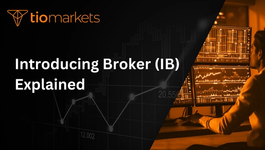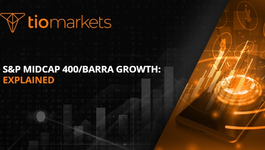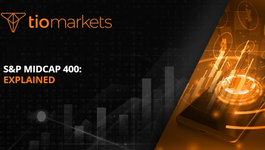Spread in Financial Trading: Definition and Examples | TIOmarkets
BY TIOmarkets
|June 3, 2024In the dynamic world of financial trading, understanding the concept of spread is fundamental for both novice and seasoned traders. This article delves into the intricacies of spread, providing a comprehensive overview of its definition, types, and practical examples to illuminate its significance in trading decisions.
Understanding Spread in Trading
The spread is a pivotal element in financial trading, representing the difference between the buying price and the selling price of an asset. It is a critical factor that influences trading strategies and overall market dynamics.
Definition of Spread
At its core, the spread is the gap between the bid (sell) price and the ask (buy) price of a financial instrument. This difference is the cost that traders incur when entering and exiting positions, making it an essential consideration in trading.
Spread is often seen as a measure of market liquidity, with narrower spreads typically indicating a high volume of trading activity. Conversely, wider spreads are indicative of lower liquidity.
Types of Spread
Spreads can vary significantly across different markets and trading instruments. Understanding these variations is crucial for traders aiming to optimize their trading strategies.
- Fixed Spread: A constant spread that does not change regardless of market conditions. Preferred by traders for its predictability.
- Variable Spread: Fluctuates in real-time based on market liquidity and volatility. While it can offer lower costs during high liquidity periods, it also introduces uncertainty.
Examples of Spread in Trading
Consider a scenario where the bid price for a currency pair is 1.1200, and the ask price is 1.1205. The spread in this case is 5 pips. For a trader, this means that buying and immediately selling this currency pair would result in a 5 pip loss, highlighting the importance of spread in trading decisions.
Another example involves stock trading, where a stock might have a bid price of $50.00 and an ask price of $50.05. The $0.05 difference is the spread, which represents the cost of the trade.
Impact of Spread on Trading
Spread affects every aspect of trading, influencing decisions, potential profits, and the overall trading experience.
Cost of Trading
Spread is essentially the primary cost associated with trading. A lower spread signifies lesser costs, making it a favorable condition for traders. Conversely, a higher spread increases the cost, impacting profitability.
Trading Strategy
The size of the spread can significantly affect trading strategies, especially for short-term traders like scalpers and day traders, who rely on small price movements. A wider spread makes it more challenging to profit from small price changes.
Market Liquidity
The spread is a direct indicator of a market's liquidity. Narrow spreads are typically found in highly liquid markets, such as major forex pairs, while less liquid assets may exhibit wider spreads.
Strategies to Manage Spread in Trading
Effective management of spread is crucial for enhancing trading performance and maximizing potential returns.
Choosing the Right Time to Trade
Trading during high liquidity periods can result in narrower spreads. For forex traders, this might mean trading during the overlap of major market sessions.
Selecting Appropriate Instruments
Opting for financial instruments with naturally lower spreads can reduce trading costs. Major currency pairs, for example, tend to have tighter spreads compared to exotic pairs.
Utilizing Limit Orders
Limit orders allow traders to specify the price at which they are willing to buy or sell an asset, potentially mitigating the cost of spread.
Impact of Spread on Trading Psychology
Spread not only influences the financial aspect of trading but also plays a significant role in traders' psychology and emotions. The awareness of spread can affect decision-making processes and overall trading mindset.
For instance, a trader facing a wider spread may experience heightened anxiety or hesitation when executing trades, as the perceived cost of trading is higher. This psychological impact can lead to suboptimal trading decisions and potentially impact performance.
Managing Emotional Responses to Spread
Developing emotional resilience and discipline is crucial for navigating the psychological effects of spread on trading. Traders can benefit from implementing mindfulness techniques, maintaining a trading journal to track emotional responses, and seeking support from trading communities or mentors.
Spread Comparison Across Different Asset Classes
While spread is commonly associated with forex trading, it is prevalent across various asset classes, each exhibiting unique characteristics in terms of spread dynamics.
Forex Market
In the forex market, major currency pairs like EUR/USD and GBP/USD typically have tighter spreads due to high liquidity and trading volume. Exotic currency pairs, on the other hand, may have wider spreads, reflecting lower liquidity.
Stock Market
Stock trading involves spreads that vary based on factors such as the stock's liquidity, trading volume, and market conditions. Blue-chip stocks often have narrower spreads compared to penny stocks, which can have wider spreads due to lower trading activity.
Commodities Market
Commodities, such as gold, oil, and agricultural products, also exhibit spreads that fluctuate based on supply and demand dynamics. Highly traded commodities tend to have narrower spreads, while less commonly traded commodities may have wider spreads.
Impact of Economic Events on Spread
Economic events and announcements can have a significant impact on spread dynamics, leading to increased volatility and fluctuations in pricing. Traders need to be aware of these events and their potential effects on spreads to adapt their trading strategies accordingly.
Interest Rate Decisions
Central bank interest rate decisions can cause sudden shifts in market sentiment and liquidity, influencing spread sizes. Traders often observe wider spreads leading up to and following interest rate announcements as uncertainty and volatility rise.
Non-Farm Payrolls (NFP) Report
The release of the Non-Farm Payrolls report in the United States is a key economic indicator that can impact spread movements in the forex market. Traders may experience heightened spreads during the NFP release due to increased trading activity and market reactions.
Geopolitical Events
Geopolitical events, such as elections, trade agreements, or geopolitical tensions, can trigger market uncertainty and affect spread levels. Traders should monitor geopolitical developments to anticipate potential spread changes and adjust their risk management strategies accordingly.
Conclusion
Spread is a fundamental concept in financial trading that affects every trade. By understanding its implications and employing strategies to manage it effectively, traders can significantly enhance their trading outcomes. As with all aspects of trading, knowledge and strategic planning are key to navigating the complexities of spread and achieving success in the financial markets.
Start Trading with TIOmarkets Today
Ready to put your understanding of spreads to the test in the real markets? Join the 170,000+ traders across 170 countries who have chosen TIOmarkets as their trusted forex broker. With our platform, you can trade over 300 instruments across 5 markets, including Forex, indices, stocks, commodities, and futures, all with low fees. Plus, enhance your trading skills with our comprehensive educational resources and step-by-step guides. Don't miss out on the opportunity to trade effectively and efficiently. Create a Trading Account with TIOmarkets today and start your journey towards successful trading!

Risk disclaimer: CFDs are complex instruments and come with a high risk of losing money rapidly due to leverage. You should consider whether you understand how CFDs work and whether you can afford to take the high risk of losing your money. Never deposit more than you are prepared to lose. Professional client’s losses can exceed their deposit. Please see our risk warning policy and seek independent professional advice if you do not fully understand. This information is not directed or intended for distribution to or use by residents of certain countries/jurisdictions including, but not limited to, USA & OFAC. The Company holds the right to alter the aforementioned list of countries at its own discretion.
Join us on social media

Behind every blog post lies the combined experience of the people working at TIOmarkets. We are a team of dedicated industry professionals and financial markets enthusiasts committed to providing you with trading education and financial markets commentary. Our goal is to help empower you with the knowledge you need to trade in the markets effectively.





